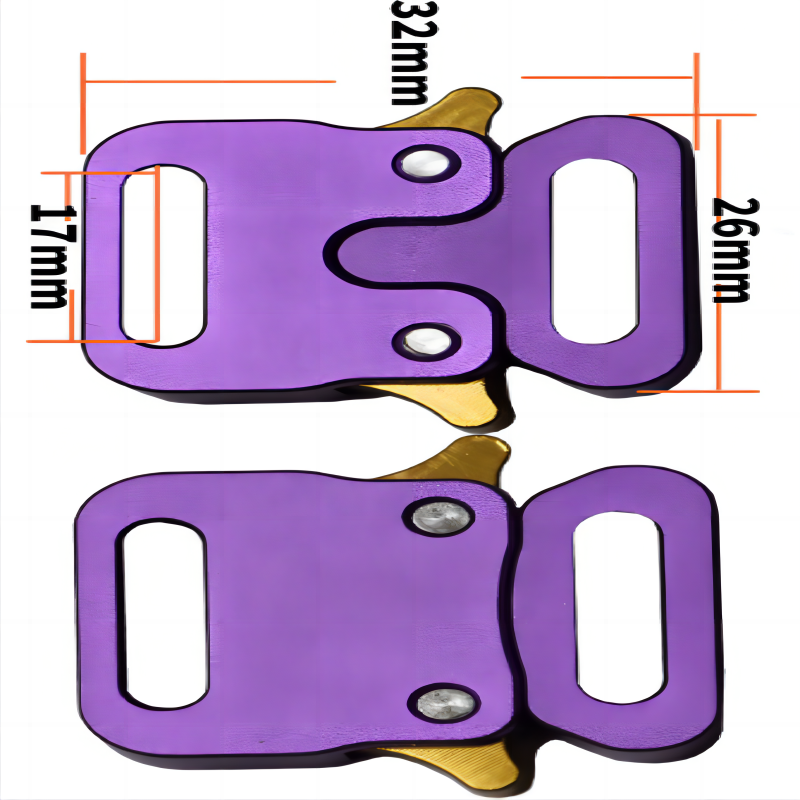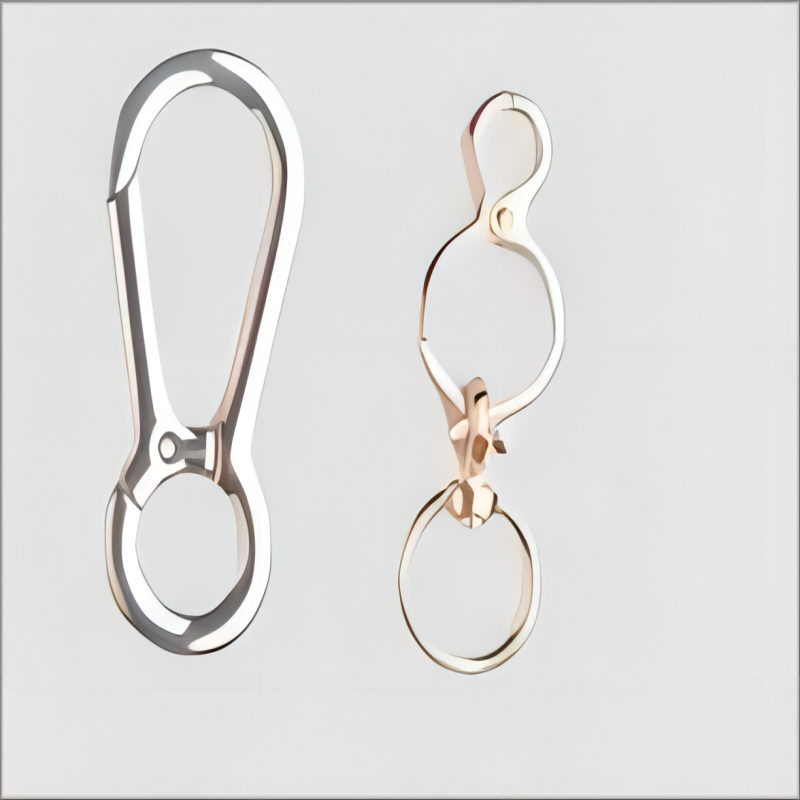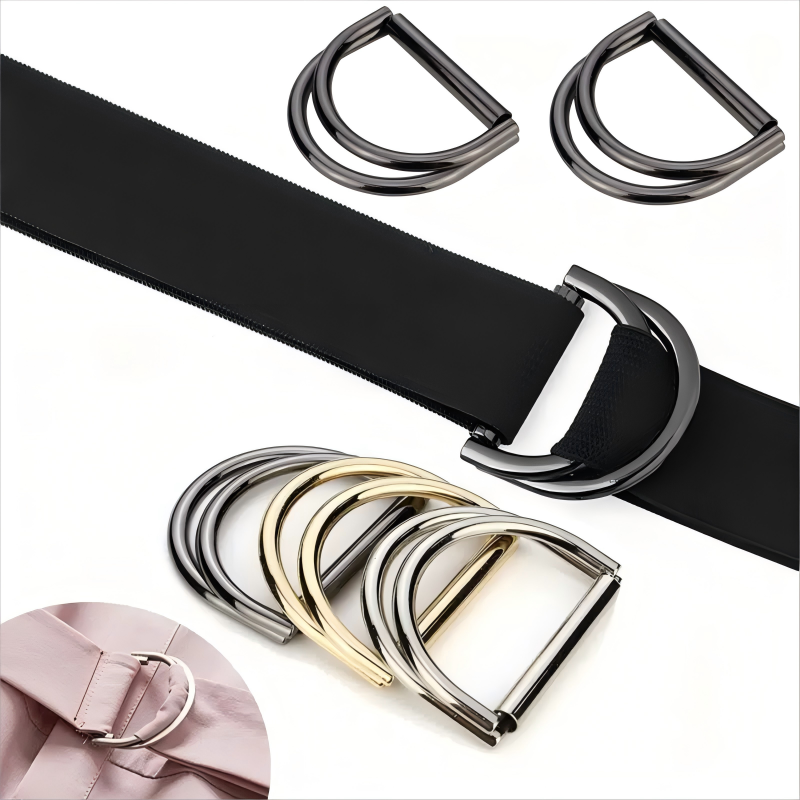Durable Hardware for Outdoor and Tactical Apparel: Built for Strength, Adaptability
Hardware for Outdoor and Tactical Apparel: Built for Strength, Versatility, and Endurance
Outdoor and tactical apparel requires high-performance hardware components capable of withstanding extreme environments while providing unmatched functionality and reliability. From military uniforms to hiking gear and tactical vests, the hardware used in these applications is critical in ensuring both safety and effectiveness. In this article, we’ll explore the key hardware components commonly used in outdoor and tactical apparel, highlighting their importance in rugged environments.
Key Hardware Components in Outdoor and Tactical Apparel
Buckles
Buckles are a fundamental hardware component in outdoor and tactical gear, frequently used in belts, backpacks, and body armor. They come in a range of types, such as side-release buckles, quick-release buckles, and cam buckles. Each type is designed for specific functions, but all prioritize secure fastening and the ability to endure high stress without failure. These buckles are typically made from durable materials like high-grade plastics, aluminum, or zinc alloys, combining strength with lightweight properties.In tactical environments, speed and reliability are essential. Quick-release buckles, for instance, enable military personnel or emergency responders to detach equipment swiftly, saving valuable time. Side-release buckles are equally dependable, offering quick adjustment to vests or straps in high-pressure situations.
D-Rings and Loops
D-rings and loops are essential for adding versatility to outdoor and tactical gear. These components are used to attach various items to clothing, bags, or tactical vests, including carabiners, tools, or other essential equipment. D-rings are usually made from durable materials such as stainless steel or aluminum to support heavy loads without breaking or bending.In tactical settings, D-rings are often placed on belts and vests to securely attach necessary gear such as water bottles, medical kits, or holsters. Their strength and durability make them indispensable for both outdoor adventurers and military personnel.
Snap Hooks and Carabiners
Snap hooks and carabiners are another key component in tactical and outdoor gear, valued for their versatility and reliability. These components are used for attaching gear to backpacks, securing items to tactical vests, or even connecting ropes during climbing expeditions. Carabiners, in particular, are prized for their load-bearing capacity and are essential in mountaineering and other outdoor activities.Tactical carabiners are designed to be lightweight yet extremely strong, often constructed from anodized aluminum or stainless steel. They typically feature a spring-loaded gate for easy attachment and detachment, making them ideal for fast-paced environments where users need to quickly access or secure their equipment.
Cord Locks and Toggles
Cord locks and toggles play a crucial role in adjusting drawstrings on outdoor apparel, backpacks, and tactical gear. These small yet powerful components ensure that pouches, hoods, and other adjustable parts of clothing or bags remain securely fastened, even in adverse conditions. Cord locks are generally made from high-strength plastic or metal to withstand constant use and resist wear.In tactical environments, where time and precision are critical, cord locks allow users to adjust the fit of their gear quickly, ensuring a snug and secure fit. Whether tightening a backpack or securing loose clothing, cord locks and toggles are vital for maintaining comfort and efficiency.
Grommets and Eyelets
Grommets and eyelets are small but essential hardware components in both outdoor and tactical clothing. They are used to reinforce holes for laces, drawstrings, or ventilation in jackets, boots, and bags. Typically made from rust-resistant materials like brass, aluminum, or stainless steel, grommets and eyelets provide durability and prevent fabric from tearing under pressure.In tactical applications, grommets are often used in tents, tarps, and bags, where they need to withstand extreme force and exposure to harsh elements like wind and water. Eyelets on boots and tactical vests enable secure lacing and attachment points, ensuring that gear remains intact and functional throughout strenuous activities.
Snaps and Press Studs
Snaps and press studs are another common hardware component found in outdoor and tactical apparel. These fasteners allow for quick opening and closing of pockets, pouches, and closures. Snaps are typically made from metal for durability and a secure hold, while press studs provide a strong closure that can endure repeated use.In outdoor gear, snaps and press studs are commonly used on jackets, backpacks, and tactical vests to provide quick access to stored items while ensuring the contents remain secure. Their strength and ease of use make them ideal for environments where fast access to equipment is essential.
Durability in Extreme Conditions
The hardware components used in outdoor and tactical apparel are specifically engineered to endure the harshest conditions. Whether it’s exposure to extreme weather, heavy abrasion, or corrosive environments like saltwater or sweat, these components are designed to function reliably when it matters most.
Corrosion Resistance: For hardware that may be exposed to moisture or salt, corrosion-resistant materials like stainless steel, anodized aluminum, and brass are commonly used. This ensures that components like buckles, D-rings, and carabiners maintain their structural integrity over time, even when exposed to corrosive elements.
Temperature Resistance: Outdoor and tactical hardware must perform reliably across a wide range of temperatures, from freezing cold to scorching heat. Materials like reinforced nylon, military-grade plastics, and thermoplastics offer excellent durability in extreme temperature environments without compromising strength.
UV Resistance: Prolonged exposure to sunlight can degrade certain materials, making UV resistance crucial for outdoor gear. High-quality plastics and specially coated metals are often used to prevent damage from UV rays, ensuring the longevity of critical hardware components.
Lightweight Design Without Sacrificing Strength
A key factor in the design of outdoor and tactical gear is weight. Every additional ounce can weigh down soldiers, hikers, or climbers, making it crucial to use lightweight materials without compromising strength or performance. Innovations in materials, such as lightweight aluminum alloys or high-strength plastics, allow manufacturers to create hardware that is both strong and lightweight.
For example, tactical buckles made from thermoplastics or aerospace-grade aluminum offer an impressive strength-to-weight ratio, allowing users to carry more gear without being burdened by excess weight. This balance is essential in outdoor and tactical scenarios where agility and endurance are critical.
Conclusion
Hardware for outdoor and tactical apparel plays a vital role in ensuring safety, durability, and functionality. Components like buckles, D-rings, carabiners, cord locks, and snaps are designed to withstand the toughest conditions while offering users the reliability they need in mission-critical situations. Whether scaling a mountain, navigating harsh environments, or engaging in tactical operations, the quality of hardware can make all the difference.
As materials science and technology continue to advance, we can expect future innovations in the hardware used for outdoor and tactical apparel, further enhancing performance, safety, and convenience. These components will remain a key element of gear designed for those who depend on their equipment in the most challenging environments.






